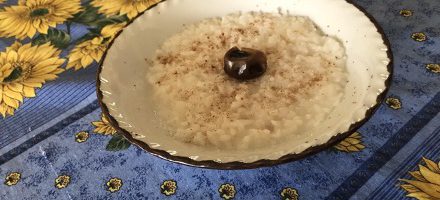Early Modern cooking is a recipe for academic writing
Students in Professor Heather Sottong’s Food Studies 133W class spent time this summer completing a homework assignment in a place you might not expect: their kitchens.
Their task was to attempt to cook a recipe from early modern Europe – that’s from around the 15th to 18th centuries. And recipes from this era were not exactly like the carefully detailed recipes we’re accustomed to today.
“Students probably can’t find all the ingredients. Most of these recipes do not tell you how long to cook. Sometimes they don’t tell you how much of each ingredient to put in,” Sottong said.
While the assignment is a fun and hands-on way to make the early modern texts come alive, Food Studies 133W, “Historical Recipes and a Recipe for History,” isn’t just about cooking. The course allows students to practice academic writing and historical research through the exploration of the social and political issues that are revealed through recipes of the late medieval and early modern period – issues that are still relevant today.
Beginning with a brief study of the ancient Roman table, students write a personal essay exploring an aspect of their personal identity through food. The course moves into medieval feasting and fasting, in which students write an argumentative essay about whether the fasting of religious women during the Middle Ages can be considered a form of anorexia nervosa.
Students then read cookery books for early modern housewives as well as texts by professional chefs of the era including Bartolomeo Scappi, which open up discussion of gender roles and social class in food and cooking. The course wraps up with a discussion of imperial taste, national cuisine and national identity before students write a research paper in which they develop an original argument based on textual evidence from a medieval or Early Modern culinary text.
The course fulfills Writing II GE credit in addition to credit for the food studies minor, and the class is a mix of students taking it for both reasons. Studying these early modern recipes is a great way to generate writing as well as explore the humanities, Sottong said.
For example, the conflicts and struggles illustrated in early modern cooking can be compared to today’s conversations about the role of women in cooking and other household responsibilities, or the inaccessibility of healthy food choices to certain segments of the population.
“These topics or the questions of food and identity are really close to home and students can easily get involved with the text,” Sottong said. “Perhaps a lot of them hadn’t thought about this way of approaching food studies. But there is so much material to be looked at from a humanistic standpoint.”
View the original post by Robin Migdol at UCLA Rothman Family Institute for Food Studies.


